Wiyeonjae Hanok Stay [Korea Quality] / 위연재 [한국관광 품질인증/Korea Quality]
10.6Km 4 2021-03-29
7, Jjoksaem-gil, Gyeongju-si, Gyeongsangbuk-do
This hanok (traditional Korean house) is located very near to Cheomseongdae Observatory. Its location in front of the Gyeongju Historic Areas allows guests to reach major sights in Gyeongju like Daereungwon Ancient Tomb Complex, Donggung Palace and Wolji Pond, and Hwangnidan-gil Street by foot. This hanok symbolizes the historicity of the city of Gyeongju in that during its construction a female skeleton and accessories made out of precious metals were excavated from the site. The accommodation’s name comes from the idiom “Muwijayeon (leaving nature as it is),” combining bamboo and pine trees with green grass, show its dedication to ideals of rest and philosophy.
There are five rooms in total, all ondol (under-the-floor heating system) rooms for two. Korean paper lining the walls and old-fashioned furniture speak to the ideal beauty of hanok. The raised floor space, which is attached to the “Munmu” room, is a great place to enjoy the scenery and take pictures. All rooms have modern bathrooms with shower facilities, and a complimentary breakfast is served in the cafe on site from 8:00 to 9:00 in the morning. The complex has abundant parking spaces for the guests.
Suseokjeong (수석정)
10.6Km 22833 2024-02-23
41 Naeri-gil, Gyeongju-si, Gyeongsangbuk-do
054-748-0835
Situated just ten minutes from the Gyeongju National Museum, Suseokjeong offers an opportunity to savor the refined culinary art of Korean table d'hote. Its signature dish is tteokgalbi jeongsik (grilled galbi patties set menu). The meal begins with warm sungnyung (scorched rice soup) served in a yugi bowl, followed by a hearty spread that includes jeonbokjuk (abalone porridge), tteokgalbi, and gungjung japchae (royal japchae). For dessert, guests can enjoy dried fruits and sujeonggwa (cinnamon punch). Nearby attractions include the Neungjitap Pagoda Site, Rock-carved Buddhas in the Tapgok Valley, and the Stone Seated Buddha in the Mireukgok Valley of Namsan Mountain.
Gyeongju Historic Area [UNESCO World Heritage] (경주역사유적지구 [유네스코 세계문화유산])
10.7Km 55544 2022-05-11
757, Taejong-ro, Gyeongju-si, Gyeongsangbuk-do
+82-54-779-6100
The Gyeongju Historic Area, registered as a UNESCO World Cultural Heritage on November 2000, is an area that embodies the time-honored history and culture of Gyeongju, the ancient capital of the Silla Kingdom (57 BC-AD 935).
The Gyeongju Historic Area can be divided into 5 major sections. The first section is the Namsan Area, a treasure trove of Buddhist art masterpieces dating back to the Silla Kingdom. Gyeongju Namsan Mountain (often referred to as an ‘outdoor museum’) is home to many historical heritage sites from the Silla Kingdom. Major attractions include: Poseokjeong (Historic Site No.1), Tapgok Maaejosanggun (Treasure No. 201), Cheollyongsaji Three-story Stone Pagoda (Treasure No. 1188), Chilbulam Maae Stone Buddha (Treasure No. 200), Bulgok Seated Stone Buddha (Treasure No. 198), and 37 other Buddhist relics
The second section is the Wolseong Area, one of the former palace sites of the Silla Kingdom. The area consists of Gyerim (Historic Site No. 19); Donggung Palace and Wolji (Historic Site No. 18), a Silla Royal Palace site; and Cheomseongdae (National Treasure No. 31), the oldest observatory in the East. Daereungwon area, the third area, features a cluster of the royal graves of the Kings and Queens of Silla.
Also in the same area are Gobungun (a cluster of old graves) in Nodong-ri (Historic Site No. 38), Gobungun (a cluster of old graves) in Noseo-ri (Historic Site No. 39) Gobungun (a cluster of old graves) in Hwangnam-ri (Historic Site No. 40), and Oreung (Historic Site No. 172), among others. Archaeologists have discovered a number of invaluable relics and historic items in this area such as Geumgwan (golden crown), Cheonmado (a painting of flying horses), and numerous pottery pieces. These finds are perhaps the greatest clues into the life of the people of the Silla Dynasty.
Area number four, the Hwangnyongsa Area, is where the former site of the Hwangnyongsa Temple (Historic Site No. 246) and Bunhwangsa Stone Pagoda are located. Lastly, is the Sanseong Area, housing remnants of the major defense system for the capital city. The site consists of Myeonghwalsanseong Fortress (Historic Site No. 47) which is estimated to be around 400 years old.
The Gyeongju Historic Area has a total of 52 designated cultural assets that are registered as World Cultural Heritages.
Gyeongju Soohojeong [Korea Quality] / 경주수호정 [한국관광 품질인증]
10.7Km 10143 2020-09-08
15-15, Poseok-ro 1068beon-gil, Gyeongju-si, Gyeongsangbuk-do
+82-10-2379-7248
Gyeongju Suhojeong, located in front of the Gyeongju Daereungwon, is a Hanok guesthouse in a ㄱ shape. The traditional house was built in 2015 in accordance with traditional architecture using natural materials such as pine tree, red clay, straw, and others; thus, it is cool in summer and warm in winter. Planted along the wall next to the door are Korean hornbeams, top trees, maple trees, and elm trees. The climbing roses on the wall bloom in May and offer a great sight. The spacious yard with a stone table is a great place to chat with fellow guests. There are seven rooms in total and a cafeteria which doubles as a lounge. Each room with a bathroom has modern facilities that suit traditional beauty. Gyeongju Station and Gyeongju Intercity Bus Terminal are only five minutes away on foot, making the trip to the guesthouse by public transport easy. Sitting right next to the Hwangridangil Street, the accommodation offers great access to popular restaurants and fashion places of Gyeongju, and to major tourist attractions such as Daereungwon, Cheomseongdae, Balwolseong, Anjapji, and Gyochon Village.
Gyeongju Daereungwon Ancient Tomb Complex (경주 대릉원 일원)
10.7Km 13734 2022-12-26
9, Gyerim-ro, Gyeonju-si, Gyeongsangbuk-do
+82-54-750-8650
Gyeongju Daereungwon Tomb Complex consists of five tombs, Ancient Tombs of Gyeongju Nodong-ri, Noseo-ri, Hwangnam-ri, Hwango-ri, and Inwang-ri. The tombs are distributed in Hwangnam-dong, Gyeongju-si, and are located in the Daereungwon area. Within Daereungwon Tomb Complex is Cheonmachong Tomb, which was excavated in 1973. Furthermore, Hwangnamdaechong Tomb was excavated between 1973 and 1975, and is a set of twin tombs belonging to a presumed married couple.
Gyeongju Ssambap Street (경주 쌈밥거리)
10.7Km 0 2024-02-08
9 Gyerim-ro, Gyeongju-si, Gyeongsangbuk-do
Gyeongju Ssambap Street, developed around the Daereungwon Ancient Tombs in Gyeongju, offers a diverse culinary experience. A highlight is ssambap (leaf wraps and rice), a dish featuring fresh vegetables accompanied by substantial side dishes like fish, meat, and doenjang jjigae (soybean paste jjigae) made from homemade soybean paste. Additionally, this street presents a variety of snacks, including Hwangnam ppang (Hwangnam bread) prepared with red beans and flour, and jjondeugi, a traditional chewy snack made from cornmeal and sugar. Nearby attractions include the Cheomseongdae Observatory, Donggung Palace and Wolji Pond, Woljeonggyo Bridge, and the Gyeongju National Museum.
Blau [Korea Quality]블라우[한국관광 품질인증]
10.7Km 0 2023-05-23
31 , Taejong-ro 699beon-gil, Gyeongju-si, Gyeongsangbuk-do
+82-10-8590-5808
Blau is a stylish guest house on Hwangnidan-gil, Gyeongju, Gyeongsangbuk-do, whose wooden furniture and signature blue coloring inside and out (‘blau’ is German for ‘blue’) give it a strong European vibe. The first floor lounge has the feel of a spacious cafe. Blau is 5 minutes’ walk from Gyeongju Express Bus Terminal. Luggage storage and a free breakfast can be provided, but guests should ask in advance.
Gyeongju Tomb of Kim Yu-sin (경주 김유신묘)
10.7Km 30138 2022-08-12
44-7, Chunghyo 2-gil, Gyeongju-si, Gyeongsangbuk-do
+82-54-749-6713
The tomb of General Kim Yu-sin (595-673) is located near the Gyeongju Express Bus Terminal at the end of a scenic lane, popular in spring for its walls of yellow forsythia and pink cherry blossom trees in bloom. The tomb itself is located in a scenic area thick with pine trees, on the eastern side of Songhwasan Mountain. The tomb of General Kim Yu-sin is a large tomb measuring roughly 30 meters in diameter, circled by a stone fence with 24 guard posts. The tomb base wall features relief carvings of the 12 Oriental zodiac gods standing guard over the tomb, brandishing weapons. The carvings are unique in that while their bodies face outwards, the heads are all turned to the right. The elaborately decorated tomb is second in grandeur only to those of royalty.
Tomb of Queen Seondeok (경주 선덕여왕릉)
10.8Km 29749 2022-07-27
Baeban-dong, Gyeongju-si, Gyeongsangbuk-do
+82-54-779-6100
The Tomb of Queen Seondeok is a round tumulus with a circumference of 73 meters. Aside from the fact that it is circled by a protective two-layer rock, the tomb has no other unique features. As the oldest daughter of King Jinpyeong, Queen Seondeok became the first queen of the Silla Kingdom. During the 16th year of her reign, Bunhwangsa Temple and Cheomseongdae Observatory were built. She also ordered the construction of the famous nine-story wooden pagoda of Hwangyongsa Temple, a significant achievement of Buddhist architecture. While many of her efforts laid the foundation for the unification of Three Kingdoms of Korea, Queen Seondeok’s reign was plagued by rebellion and strife and she died in 647 during a rebellion, 23 years before unification was realized.
Geumgwanchong Tomb (금관총)
10.8Km 16786 2020-03-18
Noseo-dong, Gyeongju-si, Gyeongsangbuk-do
+82-54-779-6100
Geumgwanchong, located in Noseo-dong, Gyeongju, is a tomb from the Silla Kingdom (B.C. 57∼A.D. 935). It is one of the three tombs that belong to the Noseo-dong Tombs in downtown Gyeongju.
Geumgwanchong Tomb is regarded as the tomb of a king before or after the reign of King Ji-Jeung during the early 6th century (500~514). It is not known exactly to whom this tomb belongs.
It was found in September 1921, when the fief was chopped while a civilian was leveling the ground to widen his building land. The first relic found in this tomb was a gold crown, geumgwan, and so
the tomb took its name. Ornaments such as gold belts, earings, bracelets, saddlers and crockery of the Three Kingdoms Era (when Goguryeo, Baekje and Silla were separated, later unified by Silla in 676 AD) were dug up from the tomb. There were numerous relics, with beaded relics alone numbering over 30,000.
The original structure of Geumgwanchong was 13m high with a 50m diameter. The relics from this tomb were moved and are now
preserved at the Gyeongju National Museum.
![Wiyeonjae Hanok Stay [Korea Quality] / 위연재 [한국관광 품질인증/Korea Quality]](http://tong.visitkorea.or.kr/cms/resource/51/2708951_image2_1.jpg)
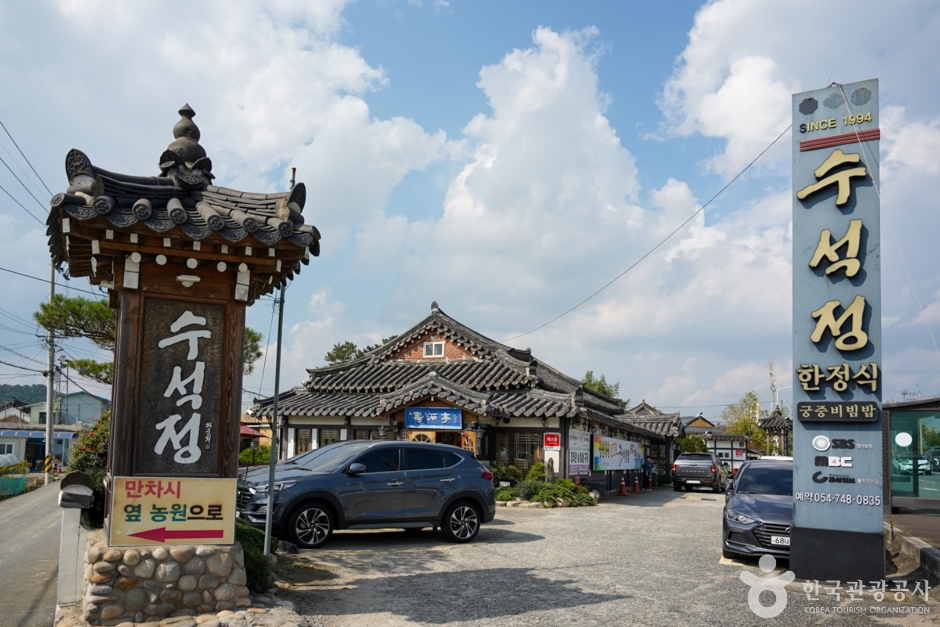
![Gyeongju Historic Area [UNESCO World Heritage] (경주역사유적지구 [유네스코 세계문화유산])](http://tong.visitkorea.or.kr/cms/resource/03/2656603_image2_1.jpg)
![Gyeongju Soohojeong [Korea Quality] / 경주수호정 [한국관광 품질인증]](http://tong.visitkorea.or.kr/cms/resource/11/2635611_image2_1.jpg)

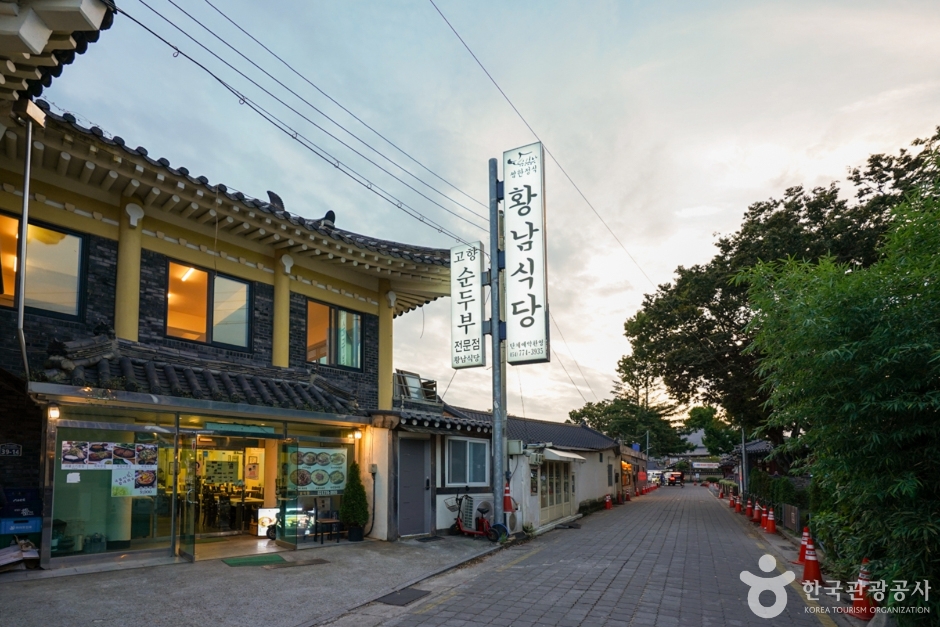
![Blau [Korea Quality]블라우[한국관광 품질인증]](http://tong.visitkorea.or.kr/cms/resource/10/2949210_image2_1.jpg)
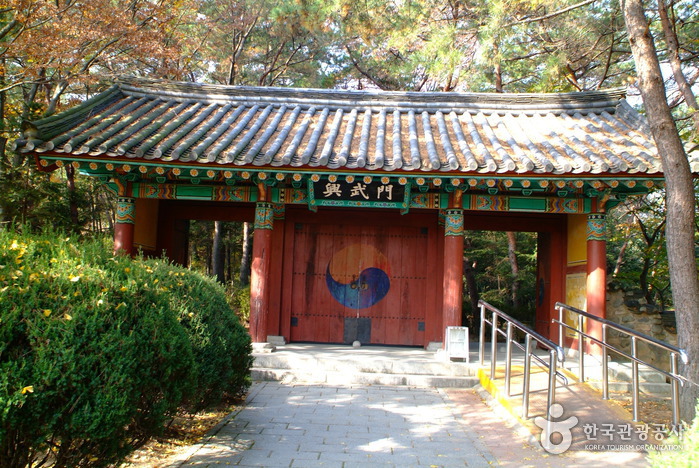
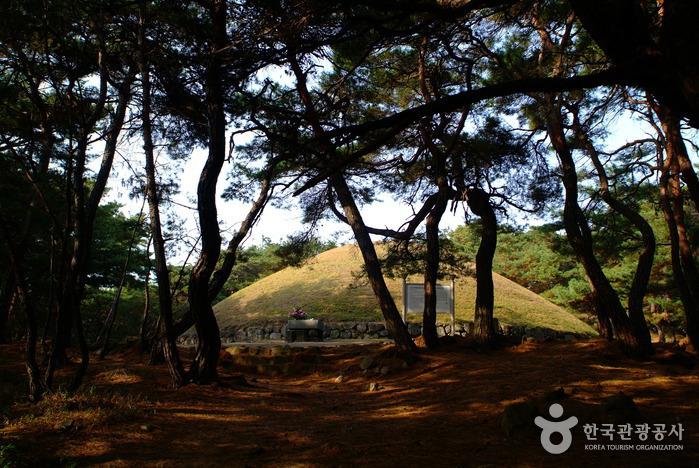
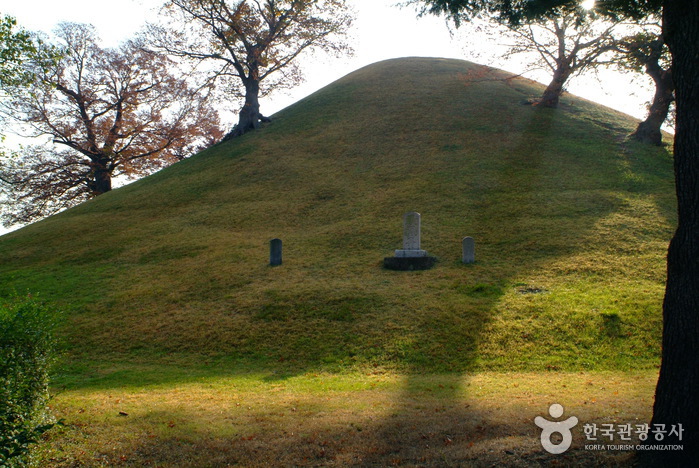
 English
English
 한국어
한국어 日本語
日本語 中文(简体)
中文(简体) Deutsch
Deutsch Français
Français Español
Español Русский
Русский